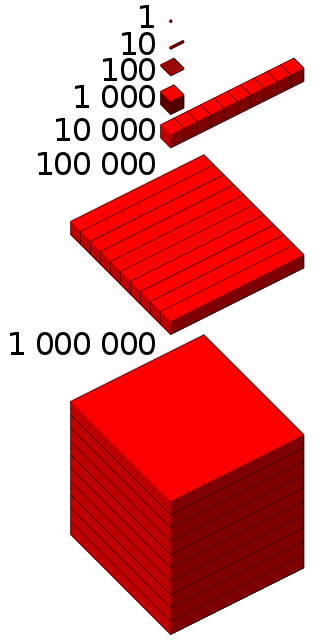In recreational mathematics, a repdigit or sometimes monodigit [1] is a natural number composed of repeated instances of the same digit in a positional number system (often implicitly decimal). The word is a portmanteau of "repeated" and "digit". Examples are 11, 666, 4444, and 999999. All repdigits are palindromic numbers and are multiples of repunits. Other well-known repdigits include the repunit primes and in particular the Mersenne primes (which are repdigits when represented in binary).
Contents
- History
- Primes and repunits
- Non-Brazilian composites and repunit powers
- k-Brazilian numbers
- Numerology
- See also
- References
- External links
Repdigits are the representation in base of the number where is the repeated digit and is the number of repetitions. For example, the repdigit 77777 in base 10 is .
A variation of repdigits called Brazilian numbers are numbers that can be written as a repdigit in some base, not allowing the repdigit 11, and not allowing the single-digit numbers (or all numbers will be Brazilian). For example, 27 is a Brazilian number because 27 is the repdigit 33 in base 8, while 9 is not a Brazilian number because its only repdigit representation is 118, not allowed in the definition of Brazilian numbers. The representations of the form 11 are considered trivial and are disallowed in the definition of Brazilian numbers, because all natural numbers n greater than two have the representation 11n− 1. [2] The first twenty Brazilian numbers are
- 7, 8, 10, 12, 13, 14, 15, 16, 18, 20, 21, 22, 24, 26, 27, 28, 30, 31, 32, 33, ... (sequence A125134 in the OEIS ).
On some websites (including imageboards like 4chan), it is considered an auspicious event when the sequentially-assigned ID number of a post is a repdigit, such as 22,222,222, which is one type of "GET" (others including round numbers like 34,000,000, or sequential digits like 12,345,678). [3] [4]









